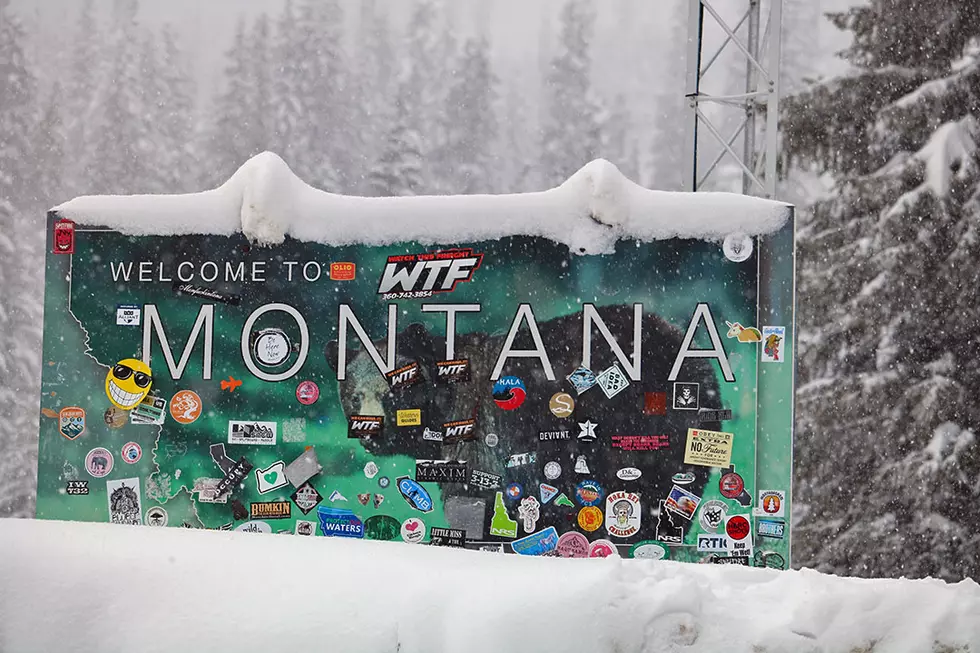
Dry March and April result in less mountain snowpack, lower rivers
A drier-than-normal April could have meant trouble for Montana’s snowpack, but slightly cooler-than-normal temperatures might have saved enough snow to see the streams through the summer, though they’ll run a little low.
Montana’s snowpack continued to lose ground in April, although a majority of basins still reported at least 90% of its average snowpack for May 1, according to information from the U.S. Natural Resources Conservation Service.
Both the upper and lower Clark Fork subbasins had 90% of their average snowpack after having 95% a month earlier. But within the first five days of May, the lower Clark Fork snowpack dropped further to 82%.
The Bitterroot basin lost more over the month of April, dropping from 110% to 90%. It also has fallen further back as of May 5 to only 84%. On the other hand, the Blackfoot River basin lucked out, managing to keep about an average amount snow.
As usual, the far northwest and southwest portions of the state suffered the most, with the Kootenai basin at 87% and the Jefferson and Madison basins at 79% of normal May 1 snowpack. As of May 5, the Kootenai dropped to 75% and the Jefferson dropped to 70%.
Following on the heels of a warm, dry March, almost the entire state received less than normal precipitation for the month of April, with some areas around Dillon receiving only 25% of normal. Areas along the Yellowstone River between Glendive and Sidney also got less than 25%. The upper Clark Fork and Big Hole basins received less than 40% of their normal precipitation.
Only a few spots along the northern Rocky Mountain Front and along the Musselshell River near Harlowton received normal amounts of moisture.
That’s caused Montana’s drought to worsen, particularly in the eastern part of the state. Severe drought or worse extends diagonally from the north-central to the southeastern corner of the state. Most of the rest of the state is either abnormally dry or in moderate drought. The only drought-free regions are a swath from the bottom of Ravalli County to Ovando and one along the south-central border.
Fortunately, it was a cooler month with about two-thirds of the state experiencing an average temperature for April of about 3 degrees below normal. That probably helped retain some of the snow covering the mountains. Only the northwestern corner of the state saw average temperatures 2 to 3 degrees above normal.
At this point, the prediction for the Clark Fork River from now through July doesn’t look too bad. The Upper Clark Fork River above Milltown could end up at about 80% of normal. But the Blackfoot River will add enough water that flows will be close to normal as the Clark Fork passes through Missoula.
Below Missoula, the Bitterroot River is predicted to run at about 87% of its normal flow so it won’t add as much to the Clark Fork River. So the Clark Fork will be about 90% of normal by the time it hits the confluence with the Flathead River, which should also have only about 90% of its flow for the three-month period.
Those flows could drop further than predicted as heat and dry air lingers throughout the next three months.
The National Oceanic and Atmospheric Administration temperature outlook for the next month shows the southwestern portion of the state as slightly warmer than normal with normal precipitation. But the three-month outlook indicates June and July are likely to be much warmer than normal and drier than normal, particularly in the southwestern portion of the state.
The lower-than-normal winter moisture and hot and dry forecast for summer means fire danger could ramp up quickly.
Contact reporter Laura Lundquist at lundquist@missoulacurrent.com.
